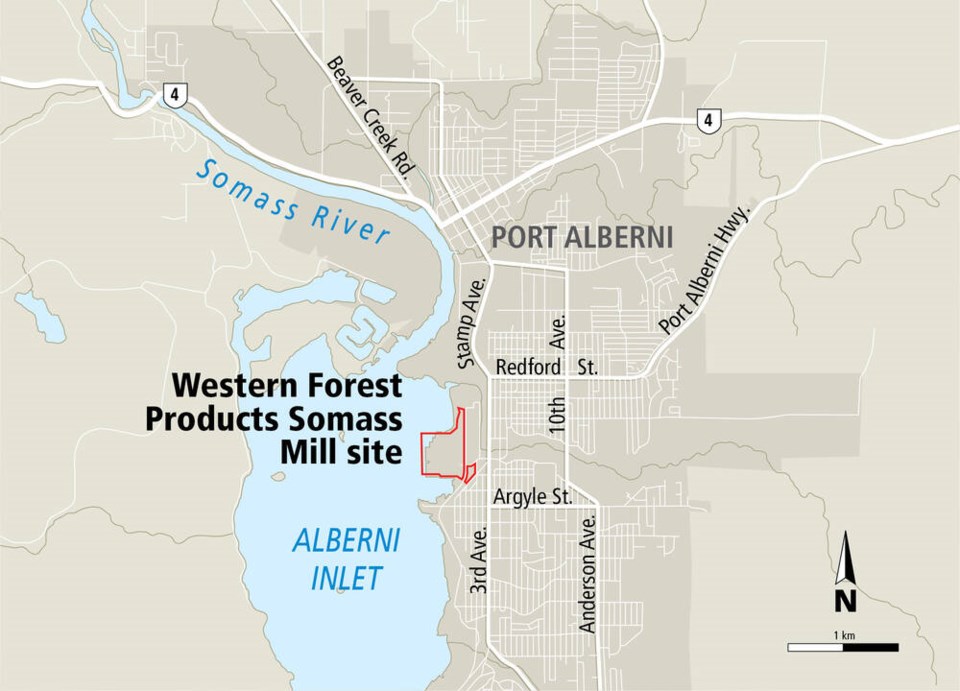Cleaning up Port Alberni’s newly purchased Somass sawmill site will cost an estimated $600,000 to $1 million, says the city’s director of development services.
Scott Smith said the estimate is preliminary, and establishing a more precise cost will require more investigation by environmental consultants.
The city is looking at ways to offset the cost of site cleanup, including a potential grant from the Federation of Canadian Municipalities’ green municipal fund, which stands at more than $1 billion. The fund provides grants for municipal environmental projects as well as low-cost loans to local governments that often include another grant of up to 15 per cent of the loan amount.
The municipality of close to 20,000 at the tip of the Alberni Inlet bought the 43-acre sawmill property from Western Forest Products this summer with plans to convert it to a mixed-use property with housing, parks, paths and light industrial space.
Port Alberni paid $5.3 million for five parcels, including the site of the closed mill.
Not all of it will be remediated. Some land is roadway, for example, and that designation is not expected to change.
The mill property, bought on an “as is” basis, requires remediation for its new uses, however.
Western Forest Products will be removing structures but is not cleaning up the site, Smith said.
The city will take down remaining structures and complete remediation required for a certificate of compliance from the B.C. Environment Ministry. That certificate would allow Port Alberni to redevelop the property.
Port Alberni hired SLR Consulting (Canada) Ltd. to advise it on what remediation may be required.
SLR noted that B.C. regulations to protect drinking water do not apply to the property because it is former infilled marine foreshore. “This is important because [drinking water] standards are usually the most stringent and require more remediation cost and effort to meet them.”
Analysis of a site requires information on its soil, groundwater and soil vapour — the gas or gases that could be released by any contaminants.
In a few months, Port Alberni expects to publish a request for expressions of interest from qualified consultants or a request for proposals to hire an environmental consultant to move ahead on its application for the certificate, Smith said.
It’s expected to take about two years to obtain the certificate.
One factor in remediation projects is that B.C.’s Environmental Management Act makes those responsible for contamination in the first place responsible for the costs incurred in cleanup, although new owners can take on that responsibility.
In Victoria, Jawl Properties bought a 25-acre former sawmill site in 1991 to develop the Selkirk Waterfront project on Jutland Road, which now includes housing, offices and restaurants.
Robert Jawl was not directly involved in the remediation work at that property, but he has led major developments in the capital region. He said that over the years, requirements for compliance certificates have become more stringent to protect health and human safety.
Standards of compliance differ depending on the ultimate use of a property. Residential use requires the highest standard of remediation, followed by commercial and then industrial.
The eventual disposal location of materials such as contaminated soils can push up costs, depending on which sites will accept them, Jawl said. Ministry requirements could see property owners trucking materials to the Lower Mainland, where they can be safely disposed of if there is not a suitable site on the Island.



